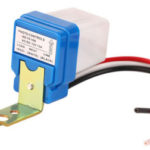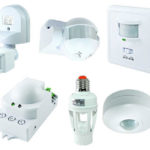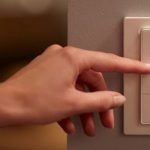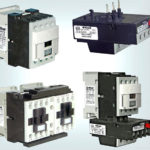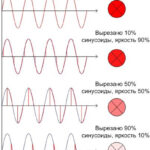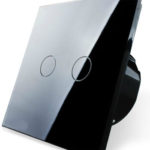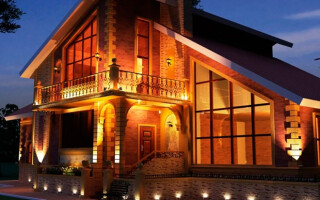To ensure the quality of life, its convenience and comfort, mankind has created a huge variety of devices and appliances. One of them is a photocell designed to turn lights on and off at certain times of day, filling dark spaces with a cozy glow in the evening and leaving room for sunshine early in the morning.
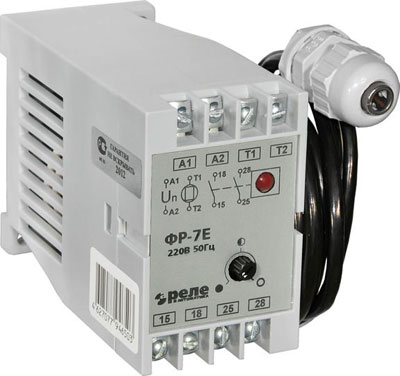
Contents
What is a light barrier?
This device does not have one clear name - there are such names as light and dusk sensor, photoelectric cell, photosensor, photo sensor, light control switch or light sensor. But all these names do not change the main purpose of this device - turning on the light at dusk, as well as turning it off at dawn.
The principle of operation is to change the parameters of some components under the influence of sunlight. As long as enough light falls on them, the circuit continues to be open. When darkness falls, the parameters of the photoresist change and the circuit closes at certain potentiometer readings. At dawn the situation changes diametrically opposite - at a certain value the circuit opens, and the relay turns off the street lighting.
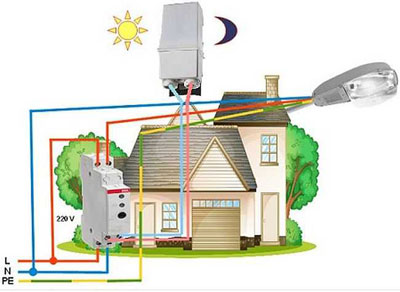
Advantages of a photo relay for street lighting
This device for regulating outdoor light has a number of undeniable advantages, among which stand out:
- Convenience in everyday life: no need to walk through a yard immersed in pitch darkness in order to open the front door - with the onset of twilight, the photorele will independently activate the lighting system.
- Saving energy: Residents of country houses often forget to turn off the lights when they go to bed or leave the house. Now, the light will be turned off with the first glimmers of the sun by a standard photo-sensor, when there are no people in the house - by a sensitive sensor with motion detection, and at certain times - specially programmed.
- Imitation of the presence of the owners: since the main factor of the presence of people in the house is the light is on - thieves and vandals will not risk to break into the house.
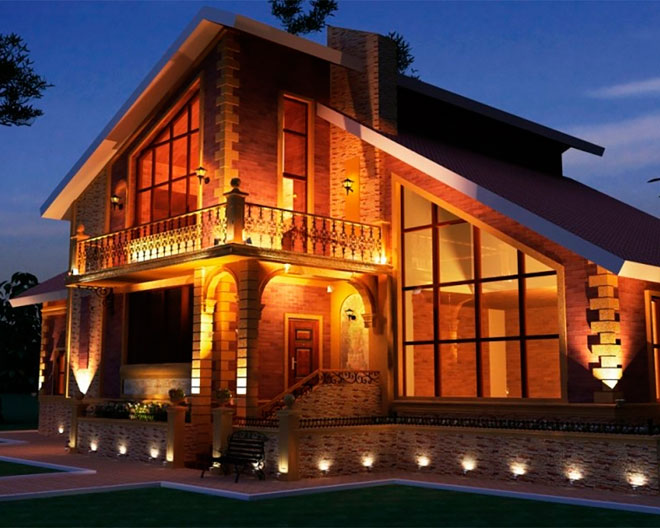
How does the light barrier work?
An integral component of any light barrier relay is a photosensor that changes its properties under the action of the stream of light. Then the photosensor is connected to the control board, which is responsible for all the necessary functions and monitors the state of the device.
There is a large variety of modifications of sensors with a different set of additional characteristics. Thus, distinguish:
- Photo relay with motion sensor: turns on the lights on the condition of any movement in the visible area. In combination with a photo sensor, it is triggered only at dark times of the day.
- Photo relay with motion sensor and timer: the sensor is so finely tuned that it is subsequently triggered at a certain moment - for example, at certain time intervals or when someone approaches the house.
- Photocell with timer: it is possible to save electricity by switching off the light at unused intervals.
- Programmable relay: considered the most expensive and functional type of light sensor. This type provides the ability to set the light on/off depending on the level of natural light, day of the week or time of year.
Also, day/night sensors differ in the type of performance. For example:
- Outdoor photo relay: the device is often installed on the wall of the house. This photoelectric sensor has a sealed housing, which is made of heat-resistant plastic.
- Indoor photoelectric relay: it is installed in the main electrical panel of the house by mounting it on a DIN-rail. This also includes a remote photosensor, which is attached to the facade and connected to the unit with two wires. Since it is necessary to break through the wall to install the necessary wiring, it is recommended to install this type of light barrier during the construction or renovation phase.
Specifications
When selecting the necessary equipment, the following characteristics must be taken into account, predetermining the functionality:
- Voltage: the most common sensors are considered to be of 220 V or 12V. Often selected by the type of voltage that powers outdoor lighting. 12-volt sensors are also used together with batteries.
- Operating mode: It is recommended to select a day/night sensor depending on the temperature conditions in your region. In addition, it is worth choosing a device with a wider temperature range in case of unexpectedly large temperature fluctuations.
- enclosure protection class: For installation outdoors it is recommended to choose class IP 44 or higher. For installation inside the house, IP 23 is recommended. This classification prescribes protection against solid particles with a diameter greater than 1 mm, as well as water spray. It is not recommended to select a photoelectric relay for outdoor installation with a lower protection class.
- Load ratings: Each photoelectric relay has its own load rating limits. The optimum is considered to be the total power of the connected lights, which is 20% less. During operation, it does not reach the limit of functionality, therefore, has a longer duration of operation.
These parameters are of course important, but it is also necessary to consider the following characteristics as adjustment parameters that can optimize the operation of the light barrier, making it more economical and efficient. Such characteristics include the following:
- Triggering threshold: this parameter increases or decreases the sensitivity. It is recommended to lower the sensitivity level in winter and in cities if there are brightly lit buildings nearby.
- Delay on and off (sec.): by increasing the delay threshold, it protects against false triggering by a third-party light source, such as car headlights. This parameter also protects deactivation of street lights when obscured by clouds or other shadows.
- Illuminance range: sets the level of illumination at which the photo sensor gives a signal to turn on or off the power. These limits are called the lower and upper limits of illumination. Presented range varies from 2-100 lux (at 2 lux it is complete darkness) to 20-80 lux (20 lux - dusk with the condition of seeing the outlines of objects).
Where is the best place to mount the photosensor?
Not unimportant is also the selection of mounting location for the equipment. The following aspects must be satisfied:
- The need to get daylight on the sensor, provided that it is remote.
- Location of light sources that can distort the operation of the photo sensor (lights, illuminated signs, windows, billboards) - it is important that the photo sensor does not react to these stimuli, their inclusion as well as off.
- Minimization of the influence of car headlights.
- The height of the photosensor - the most optimal height is 1.8-2m.
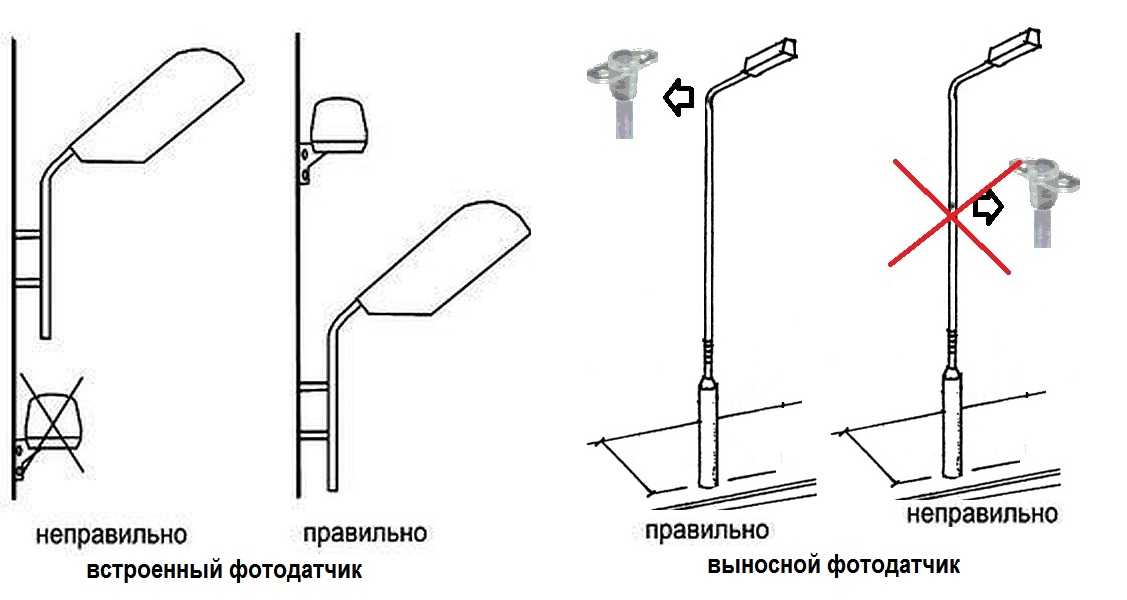
Scheme of connection of the photo detector
The main task of the remote photosensor is to supply power to the lighting system in the absence of natural light, as well as turning it off in the proper amount. The photocell is used as a kind of switch, in which the main role is performed by a light-sensitive element. Based on this, its wiring scheme is similar to that of the normal power grid - the sensor day-night phase is fed to the sensor, which is transmitted to the lighting system.
In addition, for proper operation, you need a power source of electricity, zero is fed to the right contacts. The installation of the grounding will also be important.
An important parameter, described above, was the power of the supplied load. Therefore, it is recommended to supply voltage to the photocell through a magnetic starter. Its task is to frequently turn off or on the electrical network, in which there is a light-sensitive element with a small connected load. And you can connect more powerful loads to the outputs of the magnetic starter.
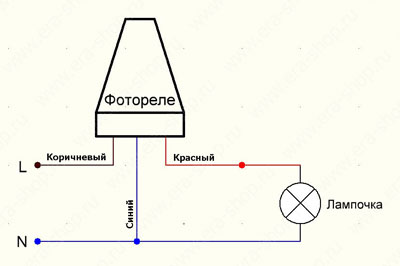
Provided that, in addition to the sensor, it is necessary to connect additional devices, such as timer or motion sensor, they are in the connection network after the photoelectric relay. In this case, the installation order of the timer or motion sensor does not matter.
The wiring must be made in the wiring box.junction boxwhich is mounted in any convenient location outdoors. It is recommended to choose sealed box models.
In addition, this device has specific wiring features. Each light barrier is equipped with three wires: red, blue/dark green, black/brown. The colors of the wires prescribe their order of connection. So, the red wire connects to the bulbs in any case, the blue/dark green wire connects to itself the zero from the power cable, and the black/brown wire often supplies the phase.
Connecting a photoelectric relay with a remote sensor
This connection option has some differences. So, the phase is connected to terminal A1 (L), which is located at the top of the device. Zero is connected to terminal A2 (N). Depending on the model, from the output, which may be located on top of the housing (designated L`) or on the bottom, the phase is fed to the lighting system.
How to adjust the light barrier relay
Adjustment of the photo detector is carried out after it has been installed and connected to the mains. Adjustment of the droop limits is done by rotating the small plastic disc at the bottom of the housing. To select the direction of rotation - to increase or decrease - you should rotate according to the direction of the arrows that are visible on the disc: to the left - decrease, to the right - increase.
The best algorithm for adjusting the sensitivity is as follows. First, by turning the sensitivity adjustment dial to the extreme right position, the lowest sensitivity is set. At dusk, it is recommended to start adjusting. To do this, turn the dial gently to the left until the light comes on. At this point you can complete the adjustment of the photosensor.
Related articles:

